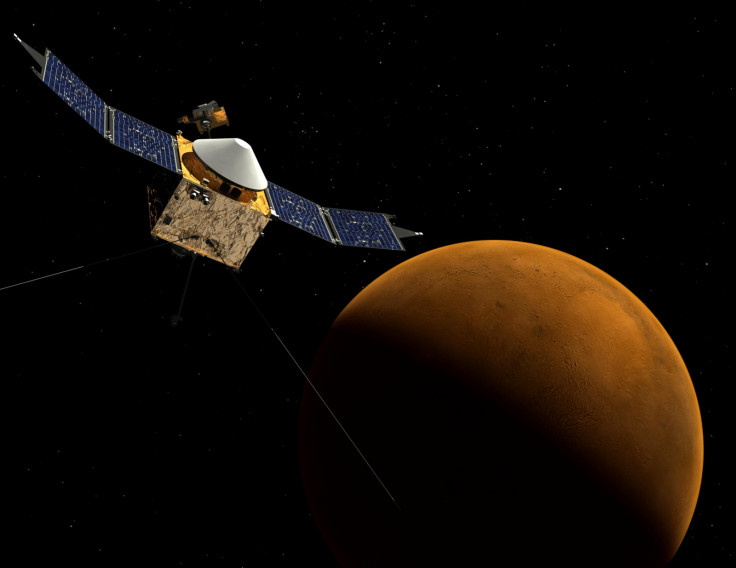Top 10 Mars discoveries: Nasa celebrates its spacecraft Maven's 1,000 days orbiting the Red Planet
From identifying solar wind impacts to discovering metal ions, Maven has made groundbreaking discoveries of the Red Planet.

Nasa's Mars orbiting spacecraft Maven completes 1,000 days in orbit on Saturday (17 June). In celebration of the historic achievement, Nasa is reminiscing the spacecraft's most important discoveries about the Red Planet, which have helped scientists understand more about Mars' inhospitable environment and whether the planet once may have supported life.
From identifying solar winds' impact to discovering metal ions, Maven has made groundbreaking discoveries of the Red Planet, all of which have helped the space agency discover key aspects about Mars' atmosphere and how it came to lose its warm and wet atmosphere billions of years ago to become the icy cold planet it is today.
"Maven has made tremendous discoveries about the Mars upper atmosphere and how it interacts with the sun and the solar wind," Bruce Jakosky, Maven principal investigator, said in a statement. "These are allowing us to understand not just the behavior of the atmosphere today, but how the atmosphere has changed through time."
Top 10 Maven discoveries:-
- Mars was stripped of its atmosphere by the sun and solar winds which changed the Red Planet's climate from "a warmer and wetter environment early in history to the cold, dry climate that we see today".
- Maven measured the rate at which solar winds "are stripping gas from the top of the atmosphere to space today, along with the details of the removal processes".
- The spacecraft measured isotopes in Mars' upper atmosphere "to determine how much gas has been lost through time", which reveal that two-thirds of the planet's gas has been lost to space.
- Maven discovered that Mars once used to have water and a warmer climate.
- The spacecraft observed the Red Planet's interaction with solar winds, which reveal that the "magnetosphere that results from the interactions varies on short timescales and is remarkably "lumpy".
- The spacecraft identified two new types of aurora termed "diffuse" and "proton".
- Maven also found that these aurorae are created by an influx of particles shot out by the sun via solar winds. "When particles from these storms hit the Martian atmosphere, they can also increase the rate of loss of gas to space, by a factor of ten or more," Nasa said.
- Maven discovered that Mars contains metal ions in its atmosphere.
- The spacecraft found that certain particles from solar winds can infiltrate the Red Planet's upper atmosphere. Nasa said: "This penetration is allowed by chemical reactions in the ionosphere that turn the charged particles of the solar wind into neutral atoms that are then able to penetrate deeply."
- The spacecraft also provided images of the distribution of gaseous nitric oxide and ozone in the atmosphere, which hint at a dynamic exchange of gases. This phenomenon is yet to be fully understood by scientists.
"We're excited that Maven is continuing its observations," said Gina DiBraccio, Maven project scientist. "It's now observing a second Martian year, and looking at the ways that the seasonal cycles and the solar cycle affect the system."
The spacecraft began its mission in November 2014 and is the first ever probe of its kind to study the Red Planet's atmosphere.
© Copyright IBTimes 2025. All rights reserved.






















